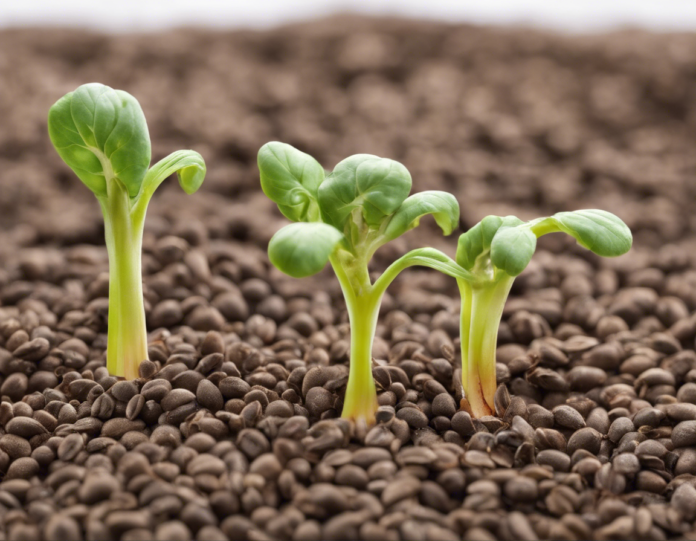Seeds play a crucial role in the life cycle of plants as they contain the embryo, which upon germination, gives rise to a new plant. During germination, the seed relies on its endosperm for nourishment until it can establish roots and begin photosynthesis to produce its own food. The endosperm is a storage tissue found in the seeds of many flowering plants, serving as a reserve of nutrients to support the initial stages of growth and development.
The Role of Endosperm in Germination
1. Nutrient Storage
The primary function of the endosperm is to store reserves of starch, proteins, and lipids, which are essential for the developing embryo. These nutrients are stored in a specialized form that can be readily mobilized and transported to support the growth of the embryo during germination.
2. Moisture Regulation
In addition to storing nutrients, the endosperm also helps regulate the moisture content within the seed. This is crucial for maintaining the viability of the seed during dormancy and ensuring optimal conditions for germination when the seed is planted.
3. Protection and Support
The endosperm provides physical protection to the developing embryo, safeguarding it from mechanical damage and environmental stresses. It also acts as a cushion, absorbing shocks and impacts that the seed may experience during dispersal.
Endosperm Types
1. Nuclear Endosperm
In some plants, such as cereals like maize and rice, the endosperm is formed through the division of the central cell of the embryo sac after fertilization. This type of endosperm contains a combination of maternal and paternal genetic material.
2. Cellular Endosperm
In other plant species, including many dicots, the endosperm is produced by the repeated division of the endosperm nucleus without cellularization. This results in a multinucleate cellular endosperm.
3. Helobial Endosperm
Certain plants, like water lilies, form a specialized type of endosperm known as helobial endosperm. This type combines aspects of both nuclear and cellular endosperm formation processes.
Endosperm Development
The development of the endosperm is a complex process that involves the coordinated growth and division of cells to accumulate nutrients and support the embryo. The endosperm undergoes changes in its structure and composition as the seed matures, preparing it to sustain germination and early seedling growth.
Endosperm in Agriculture
1. Food Production
Endosperm-rich seeds form the basis of many staple food crops consumed by humans, such as rice, wheat, and corn. These seeds have been selectively bred over generations to enhance their endosperm content and nutritional value.
2. Germination Studies
Studying the endosperm is crucial for understanding the germination process and improving crop production. Researchers investigate the molecular mechanisms underlying endosperm development and nutrient mobilization to optimize seed quality and yield.
FAQ – Frequently Asked Questions
1. What nutrients are stored in the endosperm?
The endosperm stores a combination of starch, proteins, and lipids to support the growth of the developing embryo.
2. How does the endosperm protect the embryo?
The endosperm acts as a physical barrier, shielding the embryo from mechanical damage and environmental stresses.
3. Are all seeds dependent on endosperm for germination?
No, not all seeds rely on endosperm for nourishment during germination. Some plants store nutrients in the cotyledons instead.
4. Can the endosperm be consumed as a food source?
Yes, the endosperm of certain seeds, such as rice and wheat, is consumed as a staple food in many cultures around the world.
5. How does endosperm development differ in monocots and dicots?
Monocots typically have a single, large endosperm while dicots often have a smaller, cellular endosperm that is absorbed by the growing embryo during seed development.
Exploring the role of endosperm in seed germination provides valuable insights into plant biology and agriculture. By understanding how endosperm functions to support the growth of the embryo, scientists and farmers can work together to develop more resilient and productive crop varieties to meet the challenges of a changing world.












